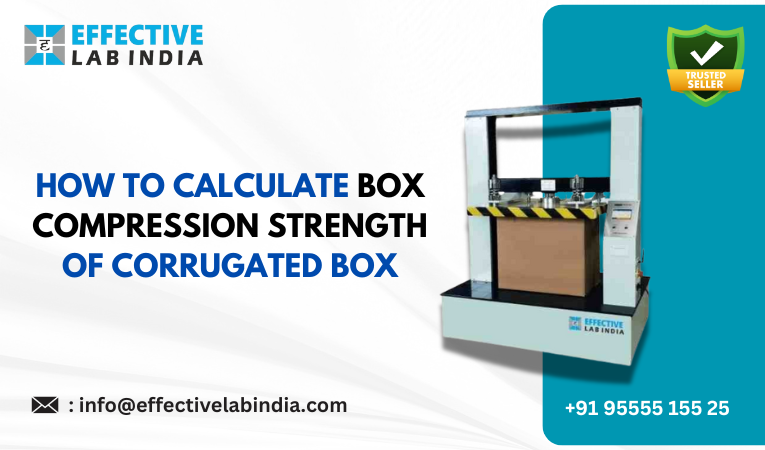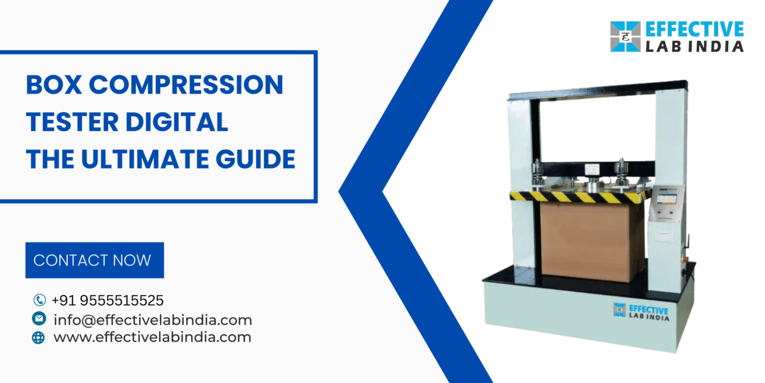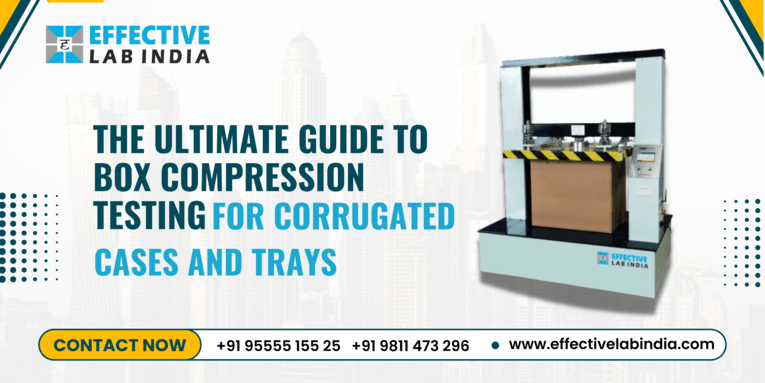
Calculating a corrugated box’s Box compression strength is crucial to understanding its durability against stacking and shipping loads. The Box Compression Test (BCT) is the main technique utilized in the sequence of phases that compose the process. The following is a comprehensive guide that will help you determine the compression strength:
Materials and Equipment Needed:
- A machine that applies compressive force to a box until it breaks is called a box compression tester.
- Sample Boxes: The tested corrugated boxes.
- Recording Device: Usually built within the Box Compression Tester, this device records the test’s data.
Steps to Calculate Compression Strength:
- Prepare the Sample Boxes:
- Make sure the sample boxes are correctly put together and in the same condition as intended.
- If necessary, precondition the boxes in a controlled setting to guarantee reliable outcomes.
- Set Up the Box Compression Tester:
- As directed by the manufacturer, calibrate the Box Compression Tester.
- Position the sample box in the centre of the tester’s lower plate.
- Conduct the Box Compression Test:
- Launch the Box Compression strength for Boxes. The box will experience compression as the upper platen starts to fall.
- Keep your sights on the test. Until the box fails or achieves its maximum box compression strength, the tester will keep applying force.
- The highest force used right before a failure is noted. This is the compression strength of the box.
- Record and Analyze Data:
- For every box that is tested, note the maximum force. Testing several boxes—usually three to five—is standard procedure to guarantee accuracy and take variability into account.
- To obtain an honest measurement, compute the average compression strength using the recorded values.
Factors Influencing Compression Strength:
- Box Dimensions: The box’s height, width, and depth.
- Types of Corrugated Board: Single, Double, or Triple Wall.
- The size and type of flutes utilised in corrugated board.
- Material Quality: The calibre of the corrugated board’s paper.
- Environmental Factors: The strength of the box can be impacted by temperature and humidity.
Example Calculation:
Assume that after testing three boxes, the highest forces that were measured were 800 N, 850 N, and 820 N.
- Sum of Recorded Forces: 800 N + 850 N + 820 N = 2470 N
- Number of Samples: 3
- Average Compression Strength: 2470 N / 3 = 823.33 N
The corrugated boxes have an average compression strength of 823.33 Newtons.
To make sure corrugated boxes can survive the rigours of transportation and storage, you must precisely ascertain their box compression testing strength. This may be done by following these procedures.
Specification
- Type: Compression
- Capacity: 1000/2000/3000/4000 Kgf(as per customer requirement)
- Display: LED (Digital)
- Accuracy: ± 2% full scale (with master load).
- Least Count: 200 gm
- Power: 220V, Single phase, 50 Hz
- Test Platform Size: 600mm × 600mm, 800mm × 800mm, 1000mm×1000mm, 1000mm×1200mm,
- Test Speed: 12.5 ± 2.5 mm/min
- Motor: 1 HP Three Phase, 1350 rpm
- Standard: ASTM D642, ASTM D4169, TAPPI T804, ISO 12048, and JIS Z0212
Box Compression Testers Manufacturer
Box Compression Tester is the most commonly used equipment in the shipping industry. High-quality box compression testers, designed for accurately measuring the compressive strength of packaging materials, are manufactured by Effective Lab India. Our cutting-edge testing apparatus guarantees accuracy and dependability, assisting sectors in preserving the integrity of their packaging solutions. We are dedicated to providing innovative and customer-focused solutions that ensure product safety and package durability.
Our Box Compression Tester is a necessary device used to make sure that packages are strong and dependable. Producers can enhance product safety by learning about how it works and its uses and in so doing cut back on damages that may occur as they are transported.
If you are living in India and you are looking for the best manufacturer of a box compression strength tester, then Effective Lab India is the best suit for you. Effective Lab India is the best manufacturer and supplier of testing equipment in India, especially in the expanding city of Faridabad, India. The price of a Box Compression Tester Starts from 240000 INR to 540000 INR in India.
Faq’s
1: What is the box compression test formula?
Ans: Maximum load divided by the surface area of the box is the formula of the box compression tester.
2: What is a box compression test?
Ans: Box compression tester is a testing equipment used for testing the strength of boxes/ cartons. It is designed for testing compressive strength on boxes according to international standards.
3: What is the use of a compression tester?
Ans: A box compression tester is used to ensure the capability and durability of a box against pressure.
4: What is the speed of the Box compression test?
Ans: The speed of the box compression test depends on the specific requirements of testing. It is usually conducted at a controlled and steady rate for the measurement of the maximum load of a box.

